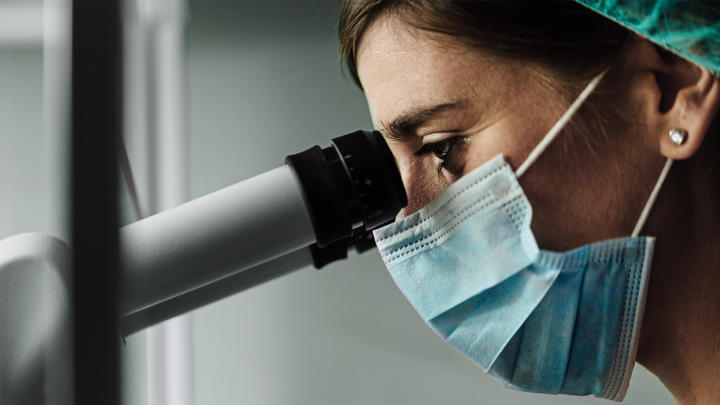Video Lesson

Experts you'll learn from

Medical & Laboratory Director
Columbia University Medical Center

Laboratory Director
NYU School of Medicine

Vedoucí lékař skupiny FutureLife
Předseda výboru sekce asistované reprodukce ČGPS
Chief Medical Officer, FutureLife International
Chairman, Czech IVF Society

Founder & Medical Director
CCRM Colorado
Written Lesson
How To Rate A Lab
As you may recall from the last few lessons, many crucial steps in the IVF process are completed by a clinic’s laboratory. There is a wide range in laboratory quality, and being treated at a clinic with a world-class laboratory can double a patient’s chances of success during any given IVF cycle.
We think of the laboratory as a mill because its workflow is linear: it must fertilize eggs, cultivate embryos, occasionally be able to biopsy those embryos for genetic testing, and then be able to freeze embryos (or eggs) and thaw them for future use. The continuum, along with rates of mere “competence” and “excellence” look something like the chart below. "Much of these key performance indicators were developed by lab directors from eighteen different countries in what became knows as the "Vienna Consensus." Ultimately, under the best circumstances, patients should be treated at a clinic with a laboratory that can:
Fertilize at least 75 - 80% of mature retrieved eggs, depending upon their fertilization technique (higher for ICSI)
Grow 60% of fertilized eggs into blastocyst embryos (or 70% to cleavage stage embryos)
Perform successful PGT biopsy and in 95% of embryos collect enough cells that the sample can be properly read
Freeze embryos and have 99% of blastocysts (or 90% of cleavage stage embryos) thaw intact

Flexible Schedule
It’s crucial that a clinic’s laboratory operates 7 days a week and has multiple embryologists on staff. In circumstances where patients had to wait for the laboratory to re-open on Monday, success rates were needlessly lower, as you can see in the study below.
Disaster Recovery and Accreditation
Also, ensure your clinic has a disaster recovery plan that includes real-time monitoring systems to indicate when equipment begins to fail, and an uninterrupted power supply if power gets severed.
Finally, in some countries (e.g. Brazil, United Sates, India) laboratories can be easily started, and are loosely regulated, so don’t expect the government or any governing body to help you ascertain if your clinic’s laboratory is competently-run. For example, in the United States, if you take a tour of your clinic, they’re likely to tout their laboratory is certified or accredited by one of the organizations below.
CAP
The College of American Pathology (CAP) runs a peer-inspection program that ensures laboratories have methods for record-keeping and improvement. About 96% of laboratories have CAP accreditation (find yours here) and if yours doesn’t, that’s a red flag. CAP accreditation does not mean a laboratory is of high quality.
State of New York
The State of New York has its own system of licensure, which is significantly more stringent than CAP’s, and every fertility clinic’s laboratory in the state should be certified (see here). If a non-New York laboratory has New York accreditation that should be considered an encouraging sign.
FDA
The FDA regulates laboratories if those laboratories work with donor eggs or donor sperm, which nearly all do (see if yours is registered here). Inspections are infrequent and they look to ensure standards are being met so diseases are not transmitted through sperm and egg donation. We view this similarly to CAP: it’s only noteworthy if your lab is not registered. If it is registered, it’s not a big deal.
